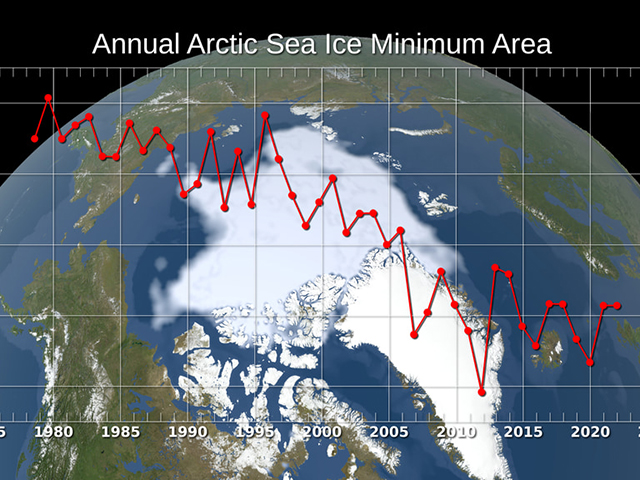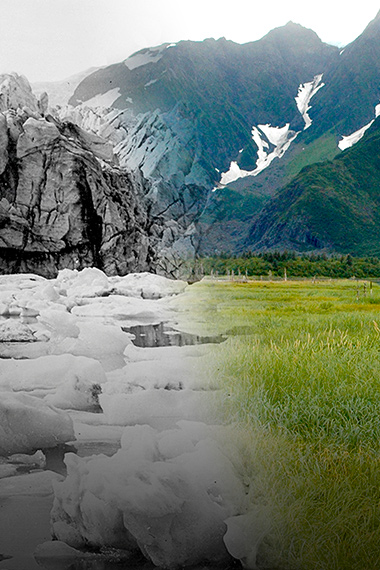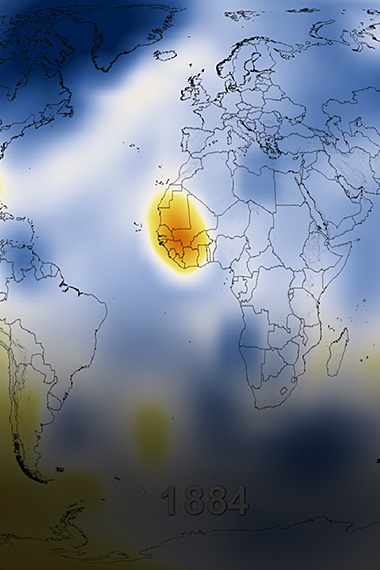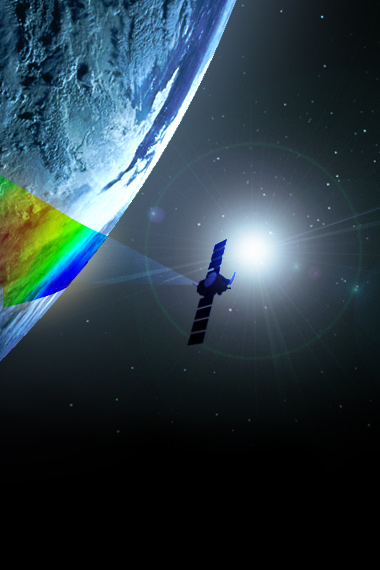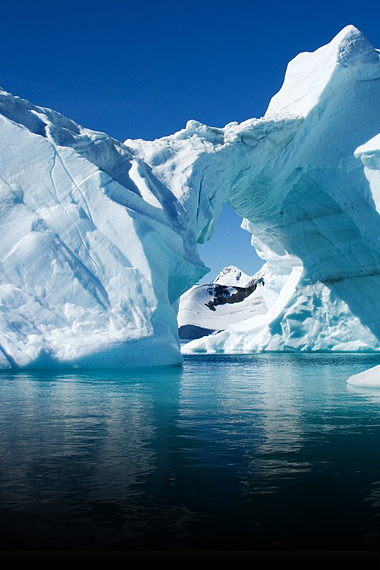MULTIMEDIA
Video: At glacial speed
Glaciers and ice sheets move in unique and sometimes surprising patterns, as evidenced by a new capability that uses satellite images to map the speed of flowing ice in Greenland, Antarctica and mountain ranges around the world. With imagery and data from Landsat 8, a joint mission of NASA and the U.S. Geological Survey, scientists are providing a near-real-time view of every large glacier and ice sheet on Earth.
Researchers aim to better understand how ice flow is changing worldwide by integrating information about atmosphere and ocean conditions to determine what causes these ice sheets to change – and what that means for how much ice is flowing into the ocean. That could help provide critical information to coastal communities that will be most impacted by sea level rise.
The Heimdal glacier in Southeast Greenland shown here can travel more than 33 feet (10 meters) per day in early summer and less than 20 feet (6 meters) per day by October. Watch the video to learn more.












